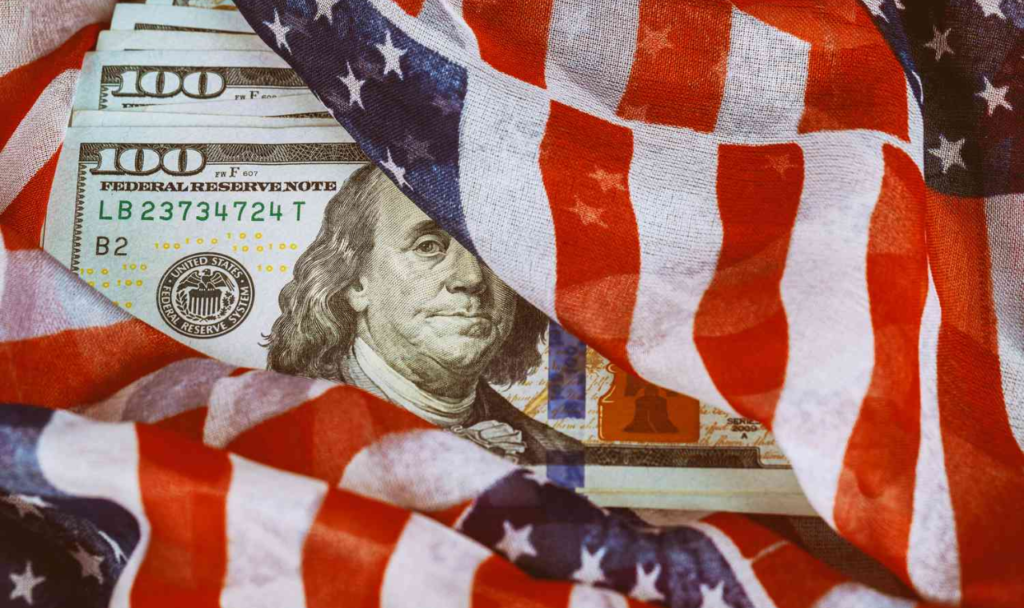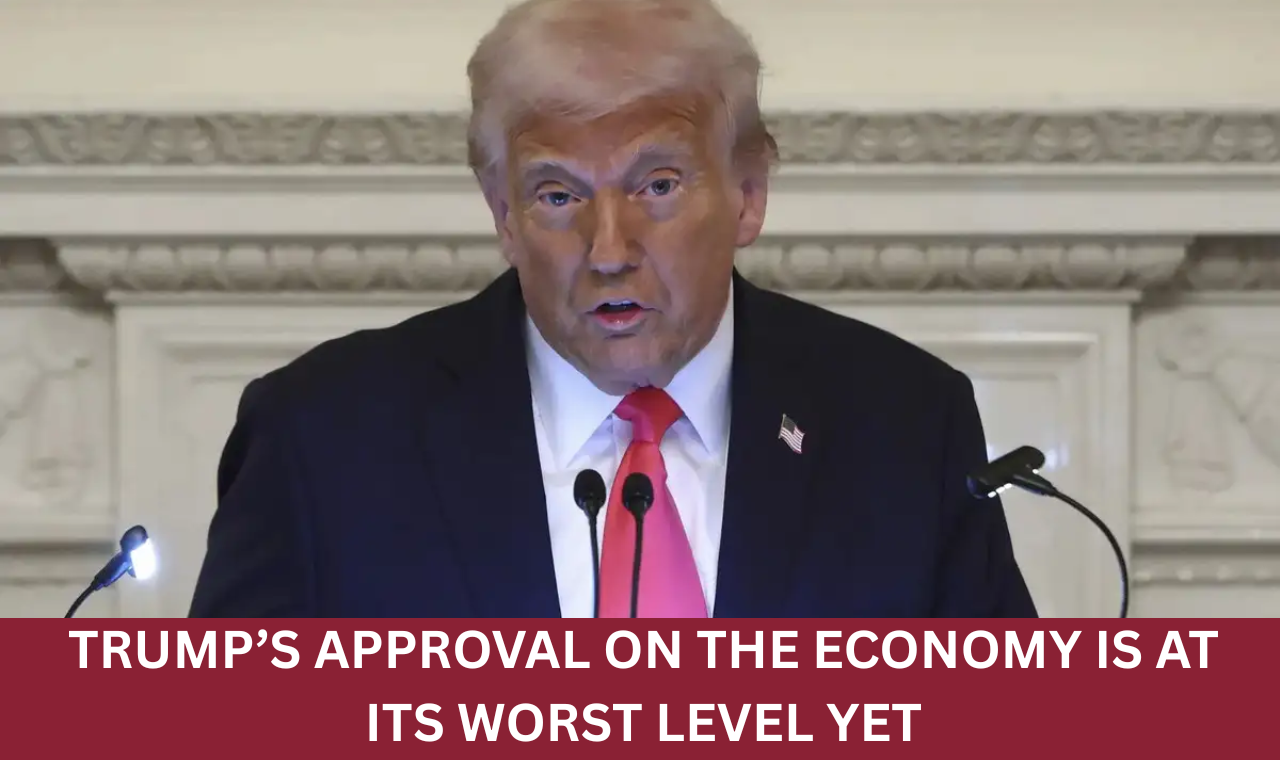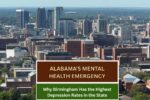President Donald Trump is facing the lowest economic approval ratings of his political career, as new polling suggests a growing number of Americans are disillusioned with his handling of the economy. This downturn in public sentiment comes amid rising inflation, controversial tariff expansions, and uncertainty about the long-term economic trajectory of the United States.
First Net-Negative Economic Rating
According to the latest CNBC All-America Economic Survey, only 43% of Americans approve of President Trump’s economic management, while 55% disapprove marking the first time he has received a net-negative rating in this category during his presidency. For a leader who has long touted stock market gains and job creation as hallmarks of his administration’s success, the reversal signals a serious public confidence gap.
The decline comes after the implementation of Trump’s so-called “Liberation Day” tariffs earlier this year, which imposed sweeping import duties on goods from China, Mexico, and the European Union. Critics argue these tariffs have disrupted global trade, driven up costs for American consumers, and intensified supply chain instability.
Tariffs Drive Negative Sentiment
A separate Quinnipiac University poll found that 72% of registered voters believe the tariffs will have a negative impact on the U.S. economy in the short term. The sentiment reflects mounting concerns over consumer prices and global competitiveness, particularly in manufacturing and agriculture—sectors already grappling with post-pandemic recovery challenges.
The Federal Reserve, in a recent policy report, warned that the tariffs could accelerate inflation and dampen domestic growth. “Trade tensions and policy uncertainty are weighing on business investment,” the Fed stated, adding that inflation risks remain tilted to the upside. (Federal Reserve Economic Data)
The economic consequences have already begun to ripple across various industries. Auto manufacturers have reported delays in component shipments, while retailers are raising prices to offset import costs. Small businesses, many of which rely on foreign suppliers, are also reporting increased operating expenses.

Core Support Remains, But Overall Ratings Drop
Despite the broader discontent, Trump still retains overwhelming support from within his party. According to Axios polling, 81% of Republican voters continue to back his tariff strategies, viewing them as necessary to protect American jobs and sovereignty.
But outside the GOP base, the mood is shifting. A Reuters/Ipsos poll published this week shows Trump’s overall approval rating has fallen to 42% his lowest since returning to office in 2024. The poll also found that a majority of voters are uneasy with what they see as an aggressive expansion of executive power, particularly in economic policy areas traditionally shaped by bipartisan consensus.
Economic Trends and Public Concerns
The White House has pushed back against the criticism, arguing that the new tariffs are part of a long-term plan to revitalize American industry and reduce dependence on foreign goods. “We are reasserting America’s economic independence,” said White House Press Secretary Angela Ross in a briefing last week. “The short-term pain is necessary for long-term prosperity.”
However, many economists disagree. “The data shows rising prices, slower GDP growth, and declining business investment,” said Dr. Maria Kim, senior economist at the Brookings Institution. “These are warning signs, not growing pains.”
Consumer confidence, too, is slipping. The University of Michigan’s Consumer Sentiment Index fell by 8 points in April, signaling growing anxiety about household finances and job security. (Bureau of Economic Analysis)
Looking Ahead to 2026
With midterm elections approaching in 2026, Trump’s economic policies are expected to dominate the campaign landscape. Democrats are already framing the president’s tariff policies as reckless, while Republicans are urging voters to stay the course.
Still, it remains unclear whether the president’s economic messaging can overcome the concrete reality of rising living costs and slowing wage growth. Data from the U.S. Bureau of Labor Statistics indicates that while unemployment remains relatively low at 4.2%, real wages have stagnated for the past three quarters. (BLS Official Site)
Conclusion
President Trump’s economic approval has hit its lowest point amid a perfect storm of inflation, trade disputes, and voter uncertainty. While his core supporters remain steadfast, independent and moderate voters appear to be souring on his economic agenda.
As 2025 progresses, Trump faces a critical test: Can he convince Americans that his policies are the right path forward, or will the economic fallout become a liability too large to ignore?

Pankaj Kumar is a skilled content writer at OTE News, focusing on breaking news, technology, and socio-political developments. With a background in Mass Communication, he brings a balanced perspective to his articles, ensuring clarity and reliability. Pankaj has a knack for simplifying complex topics for readers.
In his free time, he enjoys photography, traveling, and experimenting with new cuisines. His curiosity and dedication to truthful reporting make him a valuable contributor to OTE News.




